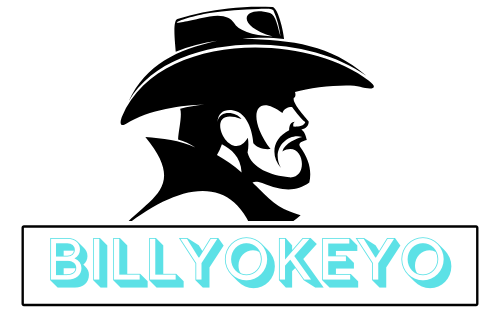In today’s competitive business landscape, the role of a Client Relationship Partner has never been more vital. These professionals are the bridge between companies and their clients, ensuring that both parties find value in their partnership. But what does it really take to excel in this position? It’s not just about managing accounts or overseeing contracts; it’s about building trust, understanding client needs, and driving results that align with business goals.
A successful Client Relationship Partner wears many hats—strategist, communicator, problem solver—all while navigating the ever-changing dynamics of different industries. Their ability to cultivate strong relationships can make all the difference in client satisfaction and retention rates. If you’re curious about how they achieve this balance or interested in stepping into this rewarding role yourself, keep reading as we explore the key skills required and essential responsibilities that define a standout Client Relationship Partner.
Key skills required for a successful Client Relationship Partner
A successful Client Relationship Partner must possess a diverse skill set. First and foremost, strong interpersonal skills are crucial. Building rapport with clients fosters trust and loyalty.
Emotional intelligence also plays a significant role. Understanding client emotions allows for better communication and effective problem-solving.
Additionally, analytical abilities are essential. A keen insight into data helps in recognizing trends and addressing specific client needs promptly.
Adaptability is another vital trait. The business landscape changes rapidly, so being flexible enables partners to pivot strategies as necessary.
Excellent time management ensures that tasks are prioritized effectively while meeting deadlines consistently.
Negotiation skills can make or break client interactions. The ability to advocate for both the client’s interests and the company’s objectives leads to win-win solutions.
Building and maintaining strong relationships with clients
Building strong relationships with clients starts with genuine engagement. Take the time to understand their needs, preferences, and challenges. Listening actively can make all the difference.
Regular check-ins are essential. These touchpoints allow you to stay updated on their evolving requirements and demonstrate that you care about their success.
Transparency is key in any relationship. Be open about processes, timelines, and potential hurdles. Clients appreciate honesty more than sugarcoated responses.
Personalization also plays a significant role in fostering loyalty. Tailor your interactions based on individual client history and feedback, showing them they are valued beyond just revenue.
Follow up after project milestones or significant interactions to maintain momentum in the relationship. This continuous effort ensures clients feel supported throughout their journey with you.
Balancing client needs with business objectives
Striking a balance between client needs and business objectives is crucial for any Client Relationship Partner. Understanding what clients want is just as important as aligning those desires with the company’s goals.
Start by actively listening to clients. This builds trust and reveals their true priorities. Use this knowledge to propose solutions that meet both parties’ expectations.
Next, prioritize transparency. Share how meeting client demands contributes to broader business targets. When clients see the connection, they become more invested in collaborative strategies.
Flexibility is key too. Sometimes adjustments are necessary for satisfying clients while keeping corporate aspirations intact. Don’t hesitate to adapt your approach when needed.
Regular check-ins help maintain this equilibrium. By staying engaged, you can pivot quickly if challenges arise or new opportunities present themselves, ensuring continued satisfaction on both sides without compromising essential business outcomes.
Understanding the industry and competition
A successful Client Relationship Partner must develop a deep understanding of the industry landscape. This knowledge allows them to anticipate market trends and shifts that could impact clients.
Staying informed about competitors is equally crucial. Knowing what others offer helps identify gaps in services or products, giving your organization an edge.
Engaging with industry news, attending conferences, and networking can provide valuable insights. These activities enhance awareness of customer needs and preferences.
Moreover, being aware of competitor strategies fosters innovation within your own approach. It encourages proactive solutions tailored to client expectations rather than reactive measures once issues arise.
This foundational knowledge empowers a Client Relationship Partner to position their business strategically while effectively advocating for the client’s best interests.
Communication and problem-solving in client relationships
Effective communication is the backbone of any successful client relationship. It involves more than just exchanging information; it’s about active listening and understanding client concerns. A Client Relationship Partner must tune into both verbal and non-verbal cues to grasp the full context of client needs.
When issues arise, problem-solving skills come into play. The ability to swiftly assess a situation, identify root causes, and propose actionable solutions can turn potential conflicts into opportunities for growth.
Being transparent during these processes fosters trust. Clients appreciate honesty about challenges and realistic timelines for resolutions.
Additionally, maintaining an open line of communication ensures that clients feel valued throughout their journey with your business. Regular check-ins not only address problems but also reinforce strong partnerships built on collaboration and mutual respect.
Ensuring client satisfaction and retention
Ensuring client satisfaction hinges on understanding their needs. A proactive approach is key. Regular check-ins help gauge how clients feel about your services.
Listening to feedback shows you value their opinions. This two-way communication fosters trust and loyalty, making clients more likely to stick around.
Anticipating issues before they arise is another vital aspect. By identifying potential problems early, you can address them swiftly, preventing dissatisfaction.
Providing ongoing support also plays a crucial role in retention. Clients appreciate knowing that assistance is just a call or email away.
Celebrating milestones together strengthens the partnership too. Whether it’s a product launch or an anniversary, recognition deepens connections and enhances overall satisfaction.
Personal touches matter—customized solutions make clients feel special and understood in an often impersonal business landscape.
Collaborating with other departments for client success
Collaboration is essential for a Client Relationship Partner. Working effectively with other departments can lead to enhanced client experiences.
Sales, marketing, and customer support teams all play vital roles in understanding client needs. By sharing insights and feedback across these divisions, you create a comprehensive service strategy that benefits everyone involved.
Regular meetings foster open communication. These discussions help identify potential issues before they escalate. When the team aligns on goals, it leads to quicker resolutions and improved satisfaction for clients.
Moreover, involving multiple departments means diverse perspectives contribute to problem-solving. This breadth of knowledge often results in innovative solutions tailored specifically for client challenges.
Encouraging teamwork also builds trust among colleagues. A united front demonstrates commitment not just internally but also towards the clients we serve daily.
Measuring success as a Client Relationship Partner
Measuring success as a client relationship partner involves more than just tracking sales numbers. It’s about understanding the depth of your connections with clients and assessing their satisfaction levels.
One effective way to gauge success is through regular feedback sessions. This helps identify areas for improvement while also showcasing how valued clients feel in the partnership.
Another critical indicator is client retention rates. High retention suggests strong relationships, whereas frequent churn may highlight underlying issues that need addressing.
Utilizing customer relationship management (CRM) tools can provide insights into client interactions and engagement patterns. Metrics like response times and resolution rates are equally important; they reflect your commitment to meeting client needs efficiently.
Setting clear goals at the beginning of each partnership can help measure progress over time. Tracking these milestones allows you to demonstrate growth not only to clients but also within your organization.
Conclusion: The importance of the Client
The role of a client relationship partner is vital in today’s business landscape. Clients are not just transactions; they are the foundation of long-term success and growth. Building strong relationships fosters trust and loyalty, which leads to repeat business and referrals.
Understanding the unique needs of each client allows for tailored solutions that meet their specific demands. This personalized approach can differentiate your services from competitors, ensuring clients feel valued.
Moreover, collaboration with other departments enhances service delivery and responsiveness. When teams work together seamlessly, it creates a unified front that addresses client concerns more effectively.
Measuring success goes beyond numbers; it’s about creating memorable experiences for clients. Retention rates speak volumes about how well you engage with them over time.
In essence, prioritizing the client experience elevates businesses in any industry. A dedicated client relationship partner plays an essential role in making this happen, bridging gaps between expectations and deliverables while nurturing connections that last.





